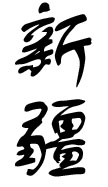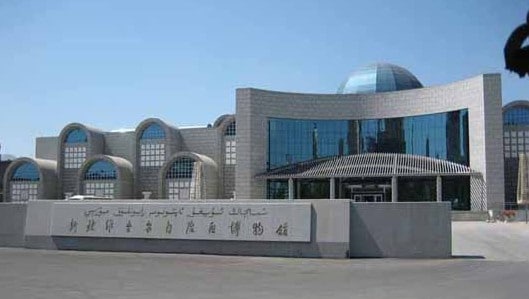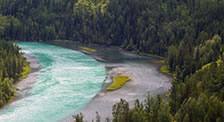Etimology of the Name “Xinjiang”?
The name Xinjiang, which directly translated means “New Frontier”, has always struck me as an odd name. To me it’s almost like giving Texas a name like “Wild West”.
Did you know that parts of Yunan and Sichuan used to be called “Xinjiang”?
According to the Chinese history article I’ve translated below, the Xinjiang region is one of 5 regions that have used the name “New Frontier”. This short article was written as a propaganda piece following the Urumqi riots, which make it an even more interesting read:

During the Qin Dynasty, Xinjiang was a land called the ‘Western Region’ which occupied a much larger area than it does now. Over the past 2,000 years the geographical boundaries of this region were constantly changed…
During the Qing Dynasty there were a total of 5 regions referred to as “Xinjiang”, including:
- Two in Yunnan (RongJiang and ZhaoTong areas);
- One in Guizhou (AnShun);
- One in Sichan (DaShao JinChuan) as well as…
- Present-day Xinjiang.
These five places generally known as Xinjiang shared three common characteristics:
- All were inseparable parts of the motherland;
- All were minority regions and;
- All were practicing the new system of governance set out by the Qing government, following the proverb “Change the soil, restore the flow”.
Because of the differences in the 5 regions mentioned above, the latter “Xinjiang” had to create its own local names, such as when the Western Region was called “Xinjiang Western Region”.
As time went on the word “Xinjiang” gradually began to specifically address this largest area until eventually the two names “Western Region” and “Xinjiang” were used interchangeably.
In 1821, Emperor DaoGuang (1821-1850) ordered a record of the affairs of the “Xinjiang Western Region” to be written. The authorized account was named “The Xinjiang Knowledge Brief” paving the way for the name “Xinjiang” to replace the antiquated name “Western Region”.
In the second half of the 19th century, Qing troops drove out foreign invaders who had been occupying Xinjiang for over 10 years. With “Change the soil, restore the flow” as their motto, they formally established the Xinjiang province in 1884.
Presently there is a divisive ideology which is deliberately portraying Xinjiang as its own separate nation, but such thoughts are entirely untrue.
There you have it. Xinjiang history through Chinese eyes.
Interesting, is it not?





